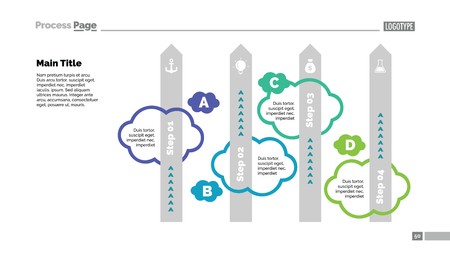Introduction to Investment Funds in the UK
If you’ve ever wondered what investment funds are and why they’re such a hot topic in Britain, you’re in the right place! Let’s kick things off with a friendly introduction. Investment funds, at their core, are simply pools of money collected from lots of people and then invested together—think of it as a communal pot where everyone chips in and shares the rewards (or risks). In the UK, these funds have become incredibly popular over time, not just among seasoned investors but also those of us who might be new to the whole thing. Why? Well, for one, they make investing feel much less intimidating. Instead of picking individual stocks or bonds yourself—which can be a bit nerve-wracking—they allow you to spread your money across lots of different companies or assets. This way, you don’t have to be a City whizz-kid to get involved. Plus, investment funds are often managed by professionals who know their stuff, which gives many Brits confidence to dip their toes into investing. So whether you’re saving for your first home in Manchester or planning retirement in Cornwall, investment funds offer a way to grow your money without needing a finance degree. It’s no wonder they’ve become such a fixture on the UK financial landscape!
2. The Early Days: Birth of Collective Investing
If you’ve ever wondered where the idea of pooling your money with others to invest came from, the story actually kicks off in good old Victorian Britain. Let’s take a quick stroll down memory lane and see how investment funds got their start in the UK.
The Victorian Spark
Back in the 1860s, London was buzzing with industrial progress and new opportunities. But investing was mostly for the wealthy—those who could afford to buy shares outright. Enter the first collective investment schemes! In 1868, the Foreign & Colonial Government Trust launched, letting everyday people chip in smaller amounts to access a diversified basket of investments. This was groundbreaking at the time, as it made investing more accessible to the middle classes.
How Did It Work?
Instead of picking individual stocks themselves, investors pooled their money together. Professional managers then invested this pot across different government bonds and later, company shares. This approach meant less risk for each individual and a shot at steadier returns.
Early Investment Fund Features
| Feature | Description |
|---|---|
| Pooling of Capital | Multiple investors combine funds for greater buying power |
| Diversification | Investments spread across various assets to reduce risk |
| Professional Management | Qualified managers make investment decisions on behalf of investors |
| Accessibility | Lower minimum investments opened doors for more people |
The Growth Through the Early 20th Century
The concept quickly caught on, and by the early 1900s, more trusts appeared in London and Edinburgh. These funds focused on both British and overseas markets, helping UK investors reach beyond their borders long before online trading was a thing!
This period laid the foundation for today’s thriving UK fund industry. It’s fascinating to think that what started as an experiment during Queen Victoria’s reign now helps millions save for everything from holidays to retirement.

3. Post-war Expansion and Regulation
After the dust settled from World War II, the UK faced a new era of rebuilding—both its cities and its financial markets. This period was a turning point for investment funds, as more people began to see them as a practical way to grow their savings. The war had changed attitudes towards money and security, making Brits keener than ever to find reliable ways to invest for the future.
The government also realised that tighter regulation was needed to protect everyday investors. In the late 1940s and 1950s, new rules were introduced to ensure transparency and fairness within the sector. For instance, the Prevention of Fraud (Investments) Act 1958 was one of several measures designed to clamp down on dodgy schemes and give people more confidence in collective investments.
This wave of regulation didn’t just keep things above board—it helped make investment funds more mainstream. The average Brit could now put their money into managed funds without feeling like they were taking a wild gamble. As wages improved and life gradually returned to normal, more households started putting aside regular amounts each month, often through workplace schemes or local building societies.
Overall, the post-war years marked a big shift: investment funds moved from being a niche option for the well-heeled into a genuine choice for ordinary savers across the UK.
4. Rise of Unit Trusts and OEICs
When we talk about investment funds in the UK, two names always pop up: unit trusts and OEICs (Open-Ended Investment Companies). These fund structures are almost like household names for British investors, but their development is actually quite unique to the UK’s financial landscape. Let’s have a relaxed chat about how they rose to popularity and why they’re such staples on this side of the pond.
What Are Unit Trusts?
A unit trust is basically a collective investment that pools money from lots of investors to buy a wide range of assets. Each investor owns “units” that represent a slice of the fund. The structure is pretty flexible, and the value of units can go up or down depending on how the underlying investments perform. Unit trusts became especially popular during the 20th century as more Brits wanted a simple way to get into investing without picking shares themselves.
The Arrival of OEICs
OEICs entered the scene in the 1990s, inspired by European fund structures but with a distinctly British twist. Like unit trusts, OEICs pool investors’ money, but they issue “shares” instead of “units.” They also have a single price for buying and selling, making things less confusing. OEICs are known for being super transparent and easy to understand, which helped them win over investors who might’ve found older fund types a bit tricky.
Unit Trusts vs OEICs: Key Differences
| Feature | Unit Trusts | OEICs |
|---|---|---|
| Ownership Structure | Units | Shares |
| Pricing Method | Duel pricing (bid/offer) | Single pricing |
| Legal Structure | Trust | Company (corporate) |
| Regulatory Framework | FCA-regulated; UK-specific rules | EU-inspired with UK adaptation |
| Popularity Today | Still used, especially by traditional investors | The go-to choice for most new funds |
Cultural Impact in the UK
You’ll often hear Brits talking about their “ISA funds” or “putting money into a unit trust for the kids.” That’s because these structures became deeply woven into personal finance culture here. Whether you’re saving for retirement or your first home, it’s likely you’ll bump into unit trusts or OEICs along the way. Their user-friendly approach played a big part in demystifying investing for everyday people in the UK.
5. Recent Trends: Tech, Transparency and Sustainable Investing
If you’ve been keeping an eye on the UK investment fund scene lately, you’ll know it’s a whole new world compared to even just a decade ago. Let’s have a quick look at how technology, transparency, and ethical investing have shaken things up.
Technology: Making Investing Easier Than Ever
First up, tech! The digital revolution has truly changed the way people in the UK interact with investment funds. Gone are the days of paper forms and postal applications. Now, you can open an account, research funds, and manage your investments from your phone—often with just a few taps. Robo-advisers like Nutmeg and Moneyfarm are giving traditional firms a run for their money by offering low-cost, algorithm-driven portfolios that suit all sorts of investors, even total beginners.
Transparency: Know What You’re Getting
Another big change is transparency. UK investors these days expect (and get) much clearer information about what their money is doing. Regulations like MiFID II have made fund managers spell out costs and performance in plain English. You can now easily compare fees, track record, and even see exactly where your money is invested. This openness helps everyone make smarter choices—and stops any nasty surprises down the line!
Sustainable and Ethical Investing: Doing Good with Your Money
The rise of ESG (Environmental, Social, Governance) investing is probably the most exciting trend for many people. More and more Brits want their investments to match their values. That means putting cash into funds that care about climate change, workers’ rights, or good governance. The demand for sustainable options has pushed nearly every major provider to offer ethical funds—so you can invest for your future while also supporting causes you believe in.
A Changing Landscape
To sum it up, today’s UK investment funds are about more than just making money—they’re about making smart choices, having control at your fingertips, and knowing your investments are working towards a better future. It’s never been easier (or more interesting!) to get involved.
6. Looking Forward: The Future of UK Investment Funds
If we dust off our crystal ball and have a bit of fun peering into the future, it’s clear that investment funds in the UK are in for some interesting times ahead. Let’s not get too serious – after all, predicting markets is a bit like guessing the British weather: you can be sure it’ll change, but you’re never quite sure how!
The Tech Takeover
First up, technology is set to play an even bigger role. Robo-advisors and AI-powered funds could become as familiar as your morning cuppa. It wouldn’t be surprising if you soon have an app on your phone giving you investment tips with a charming British accent! Automation might help make investing more accessible for everyone, not just the City types in sharp suits.
Sustainability at the Forefront
There’s also a good chance that green investing will move from a trendy buzzword to the absolute norm. Funds focusing on sustainability and ethical practices could soon be top of the pops, especially as younger generations get more involved and want their money to do some good for the planet.
Regulation Rumbles On
Of course, regulation will keep evolving – perhaps even more so post-Brexit. The government and regulatory bodies like the FCA are likely to keep a close eye on things, making sure investors are protected while keeping London’s reputation as a global finance hub intact.
More Choices, More Voices
We might also see an explosion in choice. From quirky niche funds (think vegan-only portfolios or funds supporting local British businesses) to global giants, there could be something for everyone – whether you prefer your investments shaken or stirred!
So, what’s on the cards for UK investment funds? In true British fashion, expect some surprises and plenty of innovation, all served up with a healthy dose of common sense and maybe a dash of eccentricity. Whatever happens, it’ll certainly be worth keeping an eye on – preferably with a nice cup of tea in hand.


